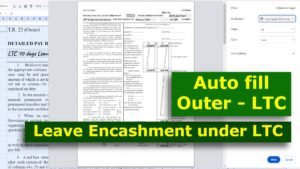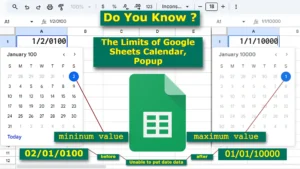This discussion focuses on how NPS combined with FD outperforms the Unified Pension Scheme (UPS), which the Central Government announced on August 24, 2024, and officially notified through a gazette notification on January 24, 2025. The scheme is set to take effect on Central Government employees from April 1, 2025.
In our previous post, we analyzed the details of the UPS. If you transition to the Unified Pension Scheme (UPS) without carefully evaluating the value of your existing NPS holdings, you may face substantial financial losses. It is crucial to review your NPS contributions, current investment value, and potential gains or losses before making the switch to prevent any negative impact on your retirement savings.
In this post, we highlight the NPS investment value as of June 30, 2024, which stood at ₹25,23,690.44, along with the monthly contribution for August 2024, amounting to ₹20,448, as shown below.

The data provided on September 19, 2024, has now been updated with quarterly investment values as of 30.06.2024, 30.09.2024, and 31.12.2024. As shown below, the subscriber received messages from NSDL or Protean detailing three separate quarterly investment values.
- As of 30.06.2024, the investment value was ₹25,23,690.44.
- As of 30.09.2024, it increased to ₹26,82,513.95.
- As of 31.12.2024, it further grew to ₹27,40,298.55.
Over six months (from July 1 to December 31, 2024), the investment increased by ₹2,16,608.11, which translates to a growth rate of 8.59%.
This steady increase highlights the profitability and compounding benefits of the NPS scheme, reinforcing its potential for long-term wealth accumulation.

Comparison with Bank Fixed Deposits (FDs)
For the same period, typical bank FD interest rates range between 6% to 7.5% annually, meaning a six-month return would be around 3% to 3.75%.
💡NPS Growth (6 months): 8.59%
💡Bank FD (6 months): 3% – 3.75%
💡Bank FD (above 6 months): 6% – 7.5%
Here is the projected investment value table from January 2025 to December 2030 considering:
- Monthly contribution: ₹20,448
- Monthly interest rate: 0.689% (based on 8.59% annual growth)
- Starting value: ₹27,40,298.55 (as of December 31, 2024, shown as above)
| Month & Year | Contribution (₹) | Interest Earned (₹) (@0.689%) | Total Value (₹) |
|---|---|---|---|
| Jan 2025 | 20,448 | 18,890 | 27,79,637 |
| Feb 2025 | 20,448 | 19,158 | 28,19,243 |
| Mar 2025 | 20,448 | 19,428 | 28,59,119 |
| Apr 2025 | 20,448 | 19,701 | 28,99,268 |
| May 2025 | 20,448 | 19,976 | 29,39,692 |
| Jun 2025 | 20,448 | 20,254 | 29,80,394 |
| Jul 2025 | 20,448 | 20,534 | 30,21,376 |
| Aug 2025 | 20,448 | 20,817 | 30,62,641 |
| Sep 2025 | 20,448 | 21,103 | 31,04,192 |
| Oct 2025 | 20,448 | 21,390 | 31,46,030 |
| Nov 2025 | 20,448 | 21,681 | 31,88,159 |
| Dec 2025 | 20,448 | 21,974 | 32,30,581 |
| Dec 2026 | – | – | 38,19,435 |
| Dec 2027 | – | – | 44,61,178 |
| Dec 2028 | – | – | 51,61,226 |
| Dec 2029 | – | – | 59,25,343 |
| Dec 2030 | – | – | 67,59,802 |
Key Insights:
- By December 2030, your investment would grow to approximately ₹67.60 lakh.
- This growth includes monthly contributions + compound interest.
- Compared to bank FDs (typically 6-7% interest), this provides significantly higher returns.
The DA, which is typically revised twice a year, adjusts based on inflation, and since NPS contributions are based on the sum of Basic Pay and DA, any increase in DA would directly impact the total contribution. Similarly, annual increments to basic pay will also affect the contribution amount.
This means that both your contribution and the government’s share are likely to rise periodically, keeping pace with inflation and salary adjustments. It’s important to factor these changes in when estimating long-term pension growth or contributions in schemes like NPS or UPS.
How NPS Investment Outpaces UPS: A Six-Month Growth Comparison
Suppose your retirement date is 31.12.2030 where you complete 25 years of service and here your age is 42 years and take the voluntary retirement (VRS). Now you have two option for retirement pension scheme NPS or UPS. Here we provide a table to compare the both pension scheme below:
- Investment value under UPS: ₹67.60 lakh
- 60% of Corpus = ₹40,56,000
- FD Interest @7% = ₹2,83,920 annually (₹23,660 monthly)
| Months | NPS Pension | FD Interest | UPS |
|---|---|---|---|
| January-2031 | 10,000 (approx..) | ₹23,660 | Nil |
| February-2031 | 10,000 (approx..) | ₹23,660 | Nil |
| March-2031 | 10,000 (approx..) | ₹23,660 | Nil |
| April-2031 | 10,000 (approx..) | ₹23,660 | Nil |
| May-2031 | 10,000 (approx..) | ₹23,660 | Nil |
| June-2031 | 10,000 (approx..) | ₹23,660 | Nil |
| July-2031 | 10,000 (approx..) | ₹23,660 | Nil |
| August-2031 | 10,000 (approx..) | ₹23,660 | Nil |
| September-2031 | 10,000 (approx..) | ₹23,660 | Nil |
| October-2031 | 10,000 (approx..) | ₹23,660 | Nil |
| November-2031 | 10,000 (approx..) | ₹23,660 | Nil |
| December-2031 | 10,000 (approx..) | ₹23,660 | Nil |
| Total | 1,20,000 | ₹2,83,920 | Nil |
To summarize the scenario and compare the outcomes of NPS and UPS, we can break down the information provided:
NPS Scenario:
- Retirement Corpus: ₹67,00,000 (total investment value by December 2030)
- 60% of Corpus (Withdrawn): ₹40,56,000 (available at retirement)
- Monthly Pension from NPS: ₹10,000
- FD Interest: Approximately ₹23,660 per month (from FD returns)
- Total Monthly Income (NPS + FD Interest): ₹4,03,920 per annum (₹33,660 per month)
In the first yar after retirement:
You receive ₹4,03,920 as pension + FD interest.
For the next 12 years, if you continue receiving a pension of ₹10,000 per month from NPS and earn interest from FD:
Total annual pension + FD interest over 12 years:
₹4,03,920 × 12 = ₹48,47,040
Thus, by the end of 12 years, under NPS, you would have earned:
- Pension + FD Interest = ₹48,47,040
- Corpus (60% of total investment) = ₹40,56,000
Total NPS benefit after 12 years = ₹48,47,040 + ₹40,56,000 = ₹89,03,040.
UPS Scenario (No Pension Until 60 Years of Age):
Under the UPS, the pension begins only after reaching the superannuation age (60 years). For the first 12 years after retirement, you do not receive any pension under the UPS scheme.
- During these 12 years, UPS provides no pension.
- Pension only starts after age 60, and the amount would be 50% of basic pay at that time.
- Basic Pay: ₹70,700 (As of December 2030).
- Pension Calculation: 50% of average basic pay over the last 12 months.
- In this case, if the employee’s average basic pay in the final year is ₹70,700, their pension would be ₹35,350 per month.
- Family Pension: 60% of the pension, i.e., ₹21,210.
- Inflation Adjustment: UPS ensures pensions are adjusted based on inflation (AICPI-IW).
- Gratuity: Lump-sum payment upon retirement, based on 1/10 of the monthly emoluments for every six months of completed service.
| Aspect | NPS + FD + Corpus | UPS |
|---|---|---|
| Pension from Retirement | ₹4,03,920 annually (Pension + FD Interest) | ₹35,350 after 60 (No pension until superannuation age) |
| Total Income (12 years) | ₹89,03,040 (Pension + FD + Corpus) | ₹35,350 after 60 (No pension for 12 years) |
| Pension Starting Age | Immediate, as part of NPS structure | Starts only after age 60 |
| Retirement Corpus | ₹40,56,000 (60% of corpus) available at retirement | Not applicable (no lump sum option in UPS) |
| Flexibility | Can access corpus, withdraw lump sum or annuity | Fixed monthly pension from age 60 |
Key Insights:
- NPS gives you immediate benefits after retirement, including the pension, FD interest, and the ability to access a significant portion of your corpus.
- UPS, on the other hand, delays pension payments until you reach the superannuation age of 60. For the first 12 years, you do not receive any pension, which can significantly impact your retirement savings and lifestyle.
- After 12 years, while NPS continues to provide both the pension and FD interest (which adds up to ₹89,03,040), UPS only starts providing a pension at age 60, which will be 50% of your basic pay at that time.

Conclusion:
Under the NPS scheme, you are likely to receive a significantly higher amount over the first 12 years post-retirement compared to the UPS. The NPS provides flexibility, immediate benefits, and compounding growth through FD interest, whereas the UPS leaves you without any pension for the first 12 years and starts pension payments much later, only at age 60.
Thus, for those who retire earlier and need income from the start, NPS appears to be the better option compared to UPS.
If you have any questions, need assistance, or encounter challenges, feel free to share your concerns in the comments. The CountLen team is dedicated to providing quick and effective solutions. If you notice any inaccuracies or misleading information, please provide feedback—we’re here to support you!








